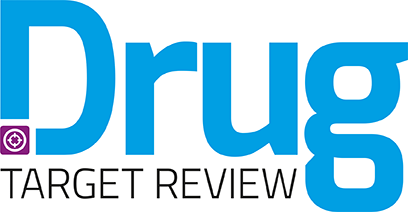Driving diversity and leadership in the biotech industry
Posted: 25 April 2025 | Drug Target Review | No comments yet
Judy Ashworth, CMO of Novadip Biosciences, shares her journey in advancing treatments for rare paediatric conditions and championing diversity in STEM.


Drug Target Review sat down with Judy Ashworth, the chief medical officer (CMO) at Novadip Biosciences, to discuss her remarkable career journey, her role in driving the development of cutting-edge regenerative treatments, and her vision for fostering inclusivity in the biotech industry. With over 20 years of experience in clinical drug development, Judy has built a career that bridges medical expertise with the strategic demands of biotech leadership.
Judy’s path into the field of clinical drug development began in her early medical career as an internist, before transitioning into the pharmaceutical industry. Her extensive experience spans both corporate and consulting roles, and today, as CMO at Novadip, she leads the clinical development team in advancing novel regenerative therapies. Through her leadership, Novadip is pioneering treatments for rare diseases, specifically in bone regeneration for paediatric patients. Judy reflects on the circumstances and events that have shaped her leadership style, and she is deeply committed to empowering other women in the field. In this interview, she shares her insights on overcoming industry challenges, the importance of mentorship, and the future of regenerative medicine.
Please introduce yourself and tell us about your role.
I’m an internist by training (an internal medicine specialist) but moved into clinical drug development when I moved to Germany 25 years ago. At the time, my German language skills were quite rudimentary and, as an internist, clear communication with your patients is vital. So, I sought work where I could apply my medical knowledge outside of clinical practice. I landed a job as a clinical pharmacologist with a family-owned pharmaceutical company where I ultimately stayed for 17 years, taking on various roles along the way, though always with a focus on the scientific and regulatory aspects of clinical development.
Upon returning to the US in late 2018, I entered consulting – first with a small consulting group then more recently as an independent. I came on board as Novadip’s CMO in late 2022, heading up its clinical development team and working with the senior management team on corporate strategy and supporting business development activities.
As CMO at Novadip, how do you guide the development of innovative treatments like NVD003 for rare paediatric conditions?
When you work in a rare disease indication, you really have to push the envelope. Standard approaches to moving a drug through the development pathway often don’t apply or cannot be readily adapted, so you must be both creative and persistent to pave a new adjacent path that regulators will accept.
On a more operational level, it’s important to keep your team not just motivated but also inspired.
On a more operational level, it’s important to keep your team not just motivated but also inspired. Given the many obstacles we face, like getting novel trial designs accepted and trying to find enough patients to recruit into our trials, it helps to regularly remind ourselves that we have the opportunity to bring a new treatment to the market that will prevent little kids from having a leg amputated. We can help restore their physical as well as emotional wellbeing and enable them to have a normal childhood; that’s pretty cool.
What do you see as the biggest challenges in advancing early-stage therapeutics, especially in regenerative medicine?
Dealing primarily with orthopaedic indications, one of the biggest challenges stems from the fact that we’re developing biologics for what is traditionally a med-tech space. As such, there’s no precedence at the US Food and Drug Administration (FDA) for what we’re trying to do. Current competitors were all approved as medical devices, not as drugs. As such, we can’t just mirror or tweak what another company did to get their product through development. The same rules don’t apply. This leads to another big challenge – educating the relevant biologics divisions at the FDA and European Medicines Agency (EMA) about the surgical indications we’re targeting. They’re more accustomed to seeing systemic treatments like immune- or gene therapies, not novel bone grafts. But as challenging as this all can be, it’s rewarding. As we’ve now successfully transitioned both of our lead products into the clinic, we’ve built a strong and collaborative working relationship with the regulators. It’s obvious to us that they want to help us be successful. They too see the potential clinical value of our technology.
As a woman in biotech leadership, what advice do you have for young women pursuing careers in STEM, and what changes do you hope to see in the next decade to make these fields more inclusive?
I’m quite fortunate at Novadip as women make up at least half of the senior leadership and department heads. But I know that this is not the industry standard. I’ve always been a firm believer in mentorship and, of course, it can be advantageous to have women mentoring women. At the same time, I think it’s valuable to connect young women who are just starting their careers with male mentors who really walk the walk when it comes to advancing and promoting women.
As for the future of DEI (diversity, equity and inclusion), given the current political situation in the US, it will be up to us as individuals to keep the momentum going.
Throughout your career, have there been specific moments where you felt being a woman in STEM either challenged or shaped your approach to leadership?
In medical school and during residency, I was exposed to my share of chauvinism and disrespect purely based on sex. And sometimes it was aimed at female patients, not just docs. As painful as it was, I think it was also formative. It’s natural to want to seek out good role models, ones you may want to emulate. But it’s equally important to be exposed to what you don’t want to be. To witness behaviours that you don’t want to see when you look in the mirror. They’re not all that black and white and the earlier you can identify them and see them in yourself, the easier they’ll be to change.
I’m a firm believer in leading with love, compassion and respect.
As a woman in STEM, what unique perspectives or strengths do you believe you bring to your work?
Given the number of years that I’ve now worked as a woman in this industry, I think I bring a level head and pragmatism to my work. I don’t allow small fires to burn out of control. For every problem that pops up, there’s a solution out there. We just need to find it and move on. The same goes when it comes to decision-making.
What do you think are the most important actions organisations can take to create a more supportive and inclusive environment for women in drug discovery and biotech?
Perhaps it’s because I’ve predominately been attending orthopaedic conferences these past couple of years, but I think, as women scientists, we unfortunately still have a long way to go. Time and again, I have been taken aback by the unthoughtful sexism in podium presentations given by young male orthopaedic surgeons. I thought those days were behind us. But apparently, in some fields, there is still very much a boy’s club atmosphere. I think it’s largely up to those scientific/medical organisations to be bolder and call out inappropriate content and/or comments. They should also be more proactive in incorporating DEI training.
In the meantime, we as women in STEM continue to support one another and, when given the opportunity, try to confront these behaviours in our male colleagues in as constructive a manner as possible.
Looking ahead, what exciting developments or advancements do you foresee in your field of STEM, and how do you envision your own work contributing to those future innovations?
Now that both of our bone regenerative products are advancing through the clinic, we’re making plans to prepare our discovery projects in skin and oncology for their entry into humans. I find this transition stage the most exciting. Not only due to the challenge of demonstrating clinical efficacy, but also in choosing the most appropriate lead indications to pursue. I absolutely love the process of indication selection. This is what truly unites my medical background with my clinical development expertise. Which indication has the greatest unmet need that our technology can transform? And if there’s a solid business case to support it, how can we get it to the market as quickly as possible to help as many patients as possible?


With over 20 years of experience in clinical drug development, Judy Ashworth joined Novadip Biosciences as Chief Medical Officer in December 2022. She began her industry career as a clinical pharmacologist at Gruenethal GmbH in Aachen, Germany, where she spent 17 years leading internal development projects, cross-functional teams, and managing an external innovation hub at the Leiden Bioscience Park.
After returning to the US in 2018, Judy transitioned into consulting, offering support to biotech companies and utilising her broad skill set. In her role as Novadip’s CMO, she leads the clinical development team in advancing the company’s bone regenerative therapies into late-stage clinical trials. Judy holds a bachelor’s degree in biology from the University of California, Santa Barbara, a medical doctorate from the University of California, Los Angeles, and she completed a residency in internal medicine at Santa Barbara Cottage Hospital.
Related topics
Biologics, Cell Regeneration, Cell Therapy, Clinical Trials, Orphan drugs, Regenerative Medicine
Related conditions
Rare diseases
Related organisations
Novadip Biosciences








